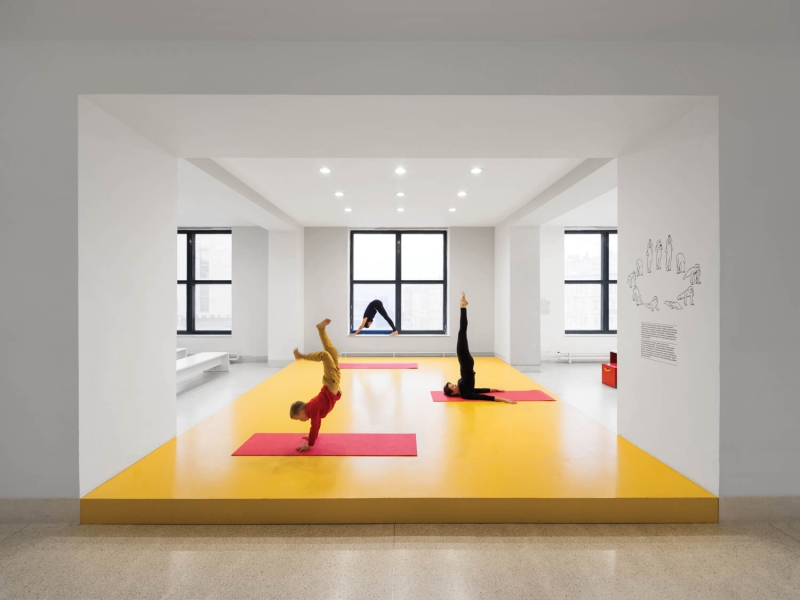A low-platform stage serves as a pop-up yoga studio in ATLAS—the acronym for Creative Studio and Laboratory of Associative Dreaming in Czech—a 9,000-square-foot multifunctional public space renovated by No Architects in the National Gallery Prague.
Designed by architects Josef Fuchs and Oldrǐ ch Tyl and completed in 1928, Prague’s imposing Trade Fair Palace—a sprawling eight-story edifice encompassing more than 258,000 square feet of airy, light-filled exhibition space— was not only the largest facility of its kind in the world but also an outstanding example of avant-garde functionalism. Even the movement’s best-known practitioner, Le Corbusier, was envious of the reinforced-concrete building’s scale since he was largely confined to smaller, residential projects at the time. (The Swiss architect’s contemporaneous plans for the modernist campus of the Czech shoe company Bata in Zlín were never fully realized.)
After World War II, the palace was converted into an office building, its spacious interior cut up into a dreary warren of smaller business suites, all of which were destroyed in a massive, six-day fire in 1974 that left nothing but the structural frame and landmarked exterior standing. Four years later, the building was given to the National Gallery Prague, a multivenue museum with the largest collection of art in the Czech Republic, as a new home for its modern and contemporary holdings. Reconstruction, which centered on the Small Hall—a superbly proportioned atrium topped with a skylight and encircled by six tiers of exhibition balconies—was slow and completed in stages. The first few floors opened in 1995 to be joined by others over time, the most recent addition being a mezzanine level that stretches the conception of what a public art gallery can be.
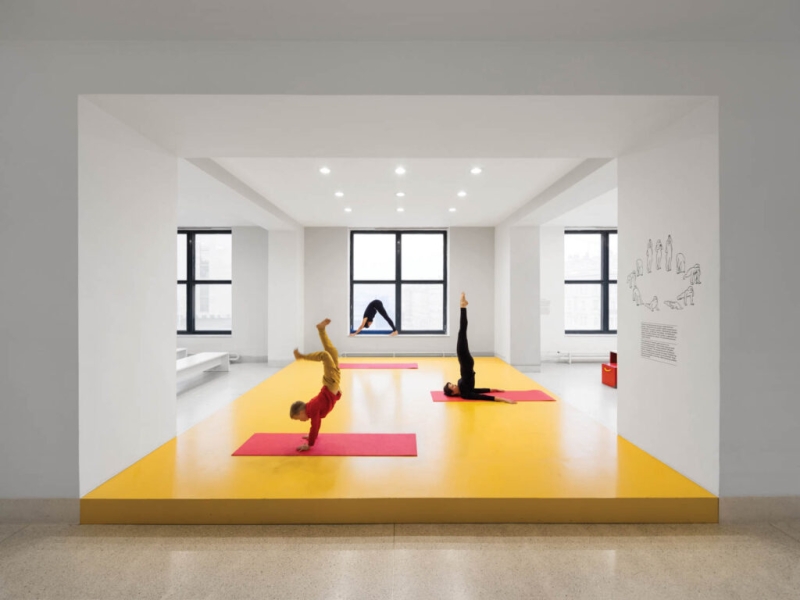
A low-platform stage serves as a pop-up yoga studio in ATLAS—the acronym for Creative Studio and Laboratory of Associative Dreaming in Czech—a 9,000-square-foot multifunctional public space renovated by No Architects in the National Gallery Prague.
The new 9,000-square-foot multifunctional space, dubbed ATLAS—the acronym for Ateliér Tvorby a Laboratoř Asociativního Snění, which translates to Creative Studio and Laboratory of Associative Dreaming—“is basically a big urban living room,” says Jakub Filip Novák, co-executive with Daniela Barácǩ ová of No Architects, the local firm that helmed the renovation. Comprising an enfilade of loosely defined zones, ATLAS encompasses a café, a low-platform stage flanked by benches and bleachers, a reading nook with shelves of library books, a row of workstations, an elevated mini playground, and a series of flexible workshop spaces. “You can be at home here and sit back in a ‘cultured’ way,” Novák continues, enumerating several possible activities: “Stretch out lazily on a couch, read or look out the window, practice a musical instrument, work on your laptop, play, chat with other visitors, have a cup of coffee, and, last but not least, enjoy art you are allowed to touch with impunity if you feel the need.”
That last, groundbreaking idea—experiencing art without the traditional museum barriers—is central to the ATLAS concept. “In the NGP, of course, every piece is insured, guarded, and accessible only through a ticket paywall—a sort of symbolic permit that binds your behavior,” notes Barácǩ ová, who met Novák when they were students at the Academy of Arts, Architecture and Design in Prague. “How do you get rid of such control?” ATLAS, which is dotted with works and installations by leading Czech talents, solves the problem through subversion: There is no entry fee and, although there is a commissioning program, officially there is no art. Artists contributing any kind of work to the space agree to drop the “art” categorization, “so their pieces become just ‘property,’ which can go uninsured and unattended,” explains Barácǩ ová. There are no eagle-eyed curators making sure visitors don’t get too close to the aesthetic interventions, many of which, in fact, encourage the public’s direct participation.
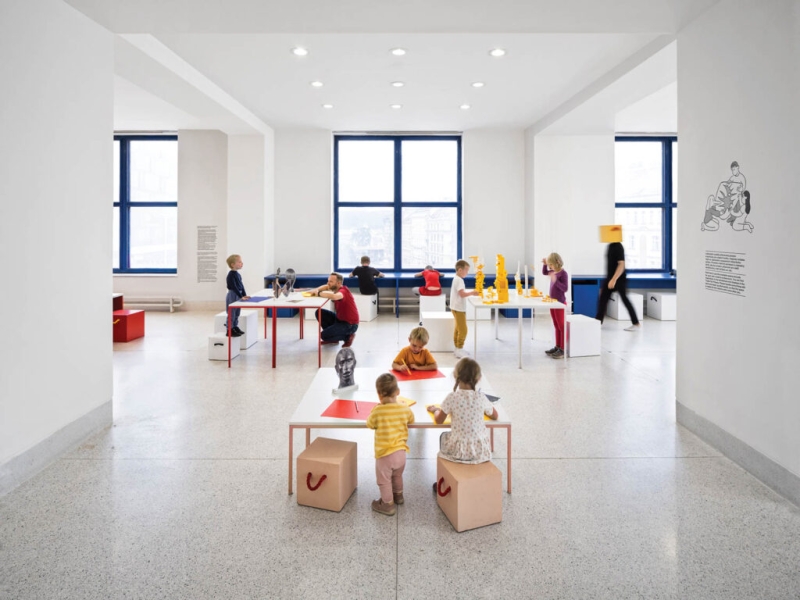
Furnished with easily moved custom tables and seating blocks, the creative space hosts LEGO and art-making workshops for kids.
Due to a severely limited budget (“about the same as you’d spend on a quality kitchen for a two-bedroom flat,” Novák quips), No Architects’s makeover was largely a matter of stripping the mezzanine down to its fine bones; removing partitions, panels, and other later additions that cluttered the space; uncovering windows so that natural light flows in once again; and restoring the terrazzo flooring, smooth plaster walls, and steel-frame fenestration back to their original glory. “We made full use of the most expensive thing we had: the 1928 architecture,” Novák says. That included recycling almost all the demolished materials, supplemented by salvage from old exhibition installations stored in the museum’s basement, which were used to construct the minimalist built-in furnishings—the low stage, the curving café counter, the workstations, and a variety of platforms for sitting, lounging, and playing on—simple geometric forms painted in brilliant, primary colors that give the facility a jaunty, Rietveldian feel.
ATLAS has proved wildly successful. “In the Czech Republic, you can receive state support to stay home with your children until they’re 4 years old,” reports Barácǩ ová. “Prague is full of young mothers and fathers who need inexpensive places to take their kids.” Elements such as the elevated playground are designed to attract youngsters, so that they look forward to accompanying their parents to the museum and also get a chance to expend some rough-and-tumble energy— not something most art institutions look kindly on. While there are workshops for art making, LEGO modeling, and other creative activities, visitors are free to use the facilities as they wish, as long as they clean up after themselves. As its name suggests, ATLAS maps a specific territory where anyone can create, dream, be poetical, or explore whatever else touches their imagination. “The space reflects the visitors who use it, for better or worse,” Novák concludes. “After all, it’s still a lab.”
Visit ATLAS Inside The National Gallery Prague
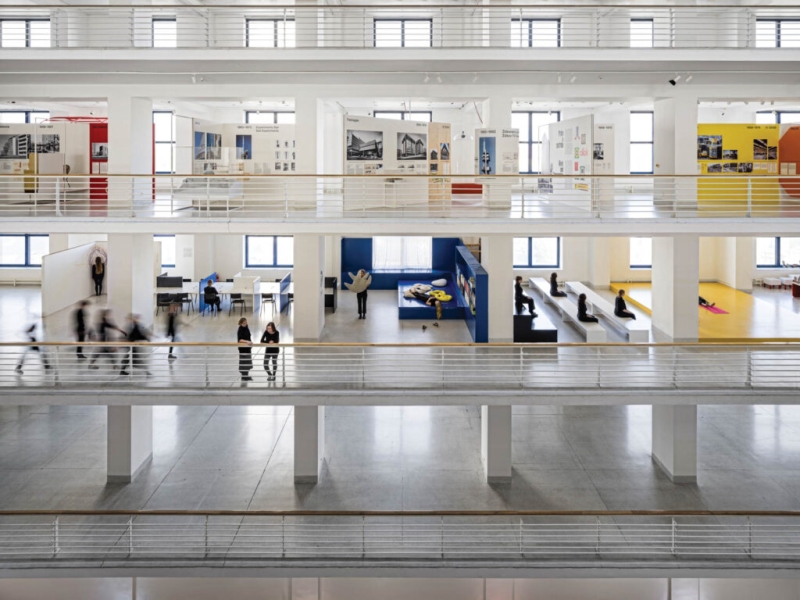
ATLAS occupies the entire mezzanine floor in the Small Hall, a soaring atrium space topped by a skylight and encircled with six tiers of open galleries.
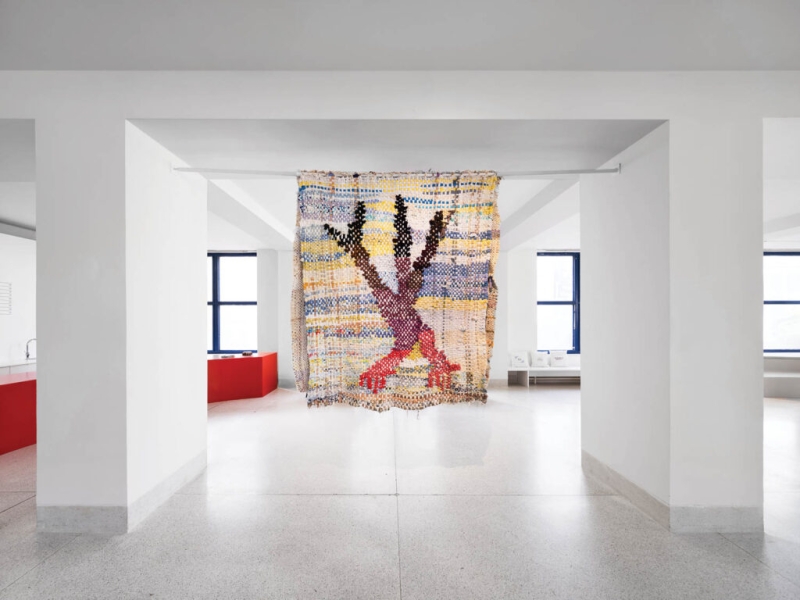
Breasts, Children, Beings, and Debris, a handwoven tapestry made of fabric scraps by Barbora Fastrová and Johana Pošová, hangs in the café.
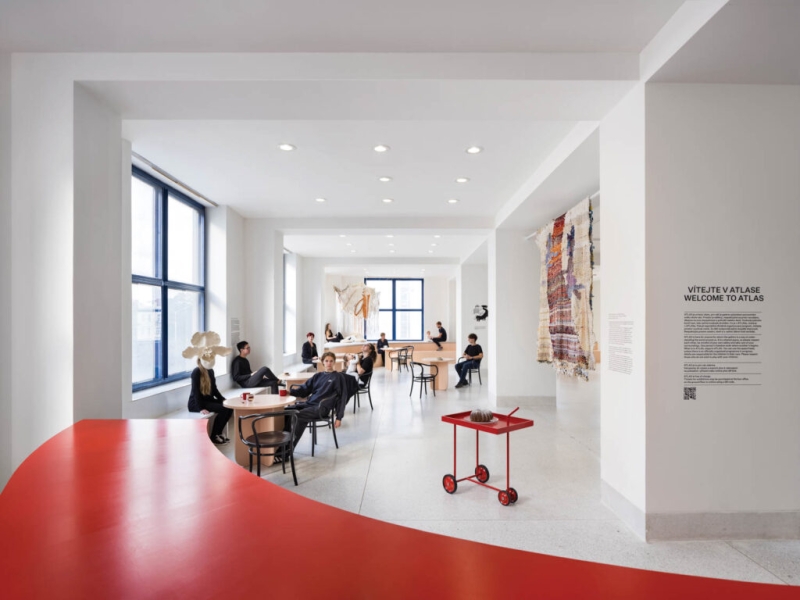
Michael Thonet bentwood chairs pull up to custom recycled-MDF tables in the café.
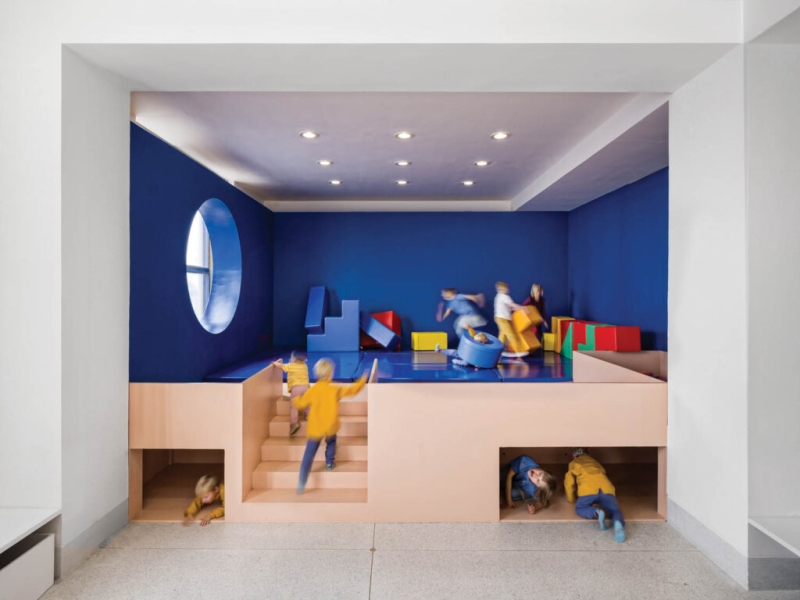
A raised platform, outfitted with washable fabric–covered padded mats, turns one corner into a playground.
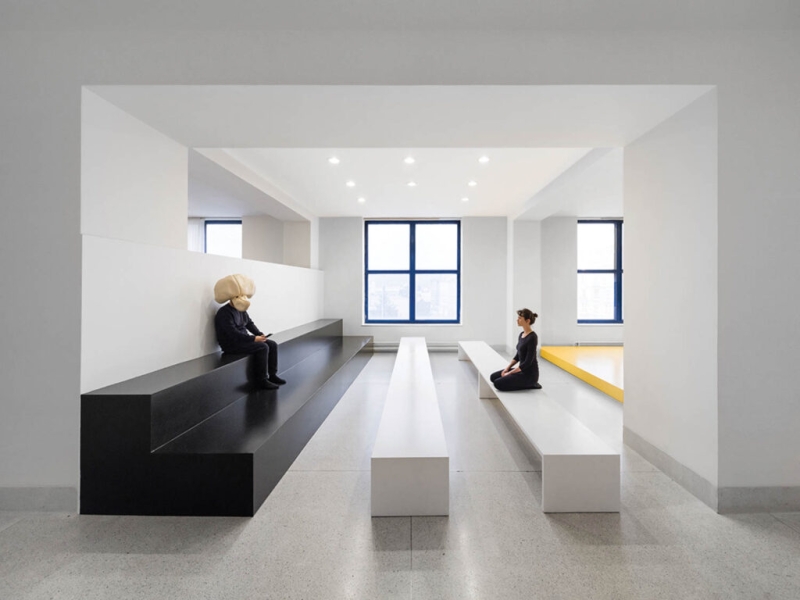
Custom bleachers and benches in recycled MDF provide seating for lectures, performances, or video presentations on the low platform
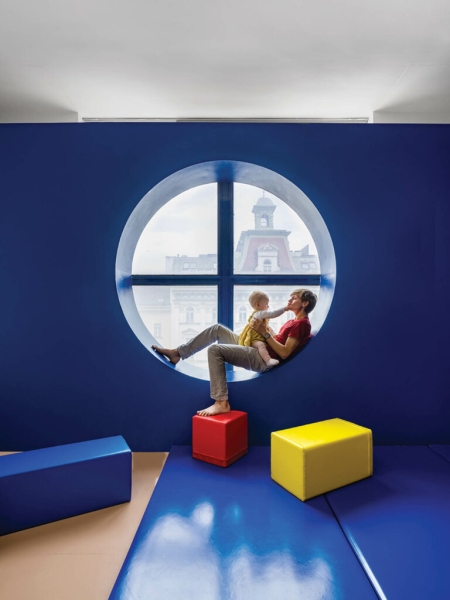
A built-in partition transforms the playground window into a child-friendly circular nook overlooking neighboring historical facades.
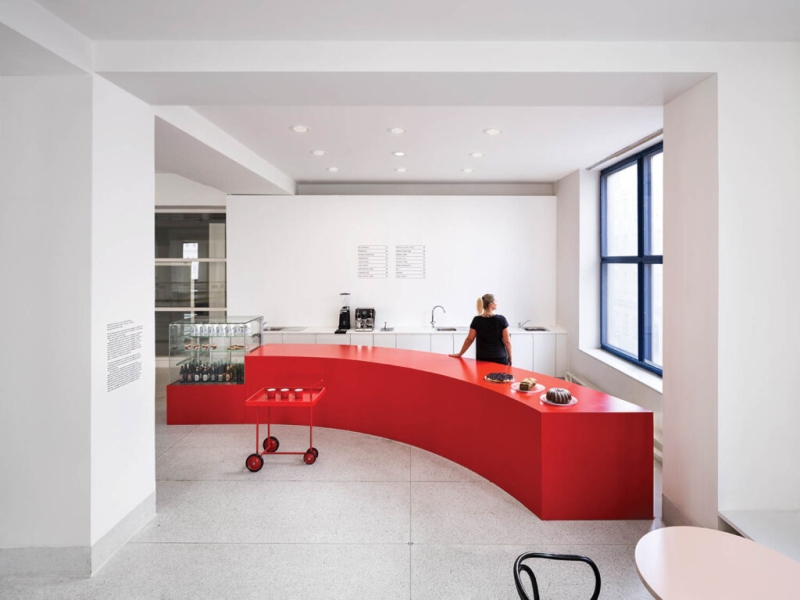
Flooring in the café and throughout is the original terrazzo.
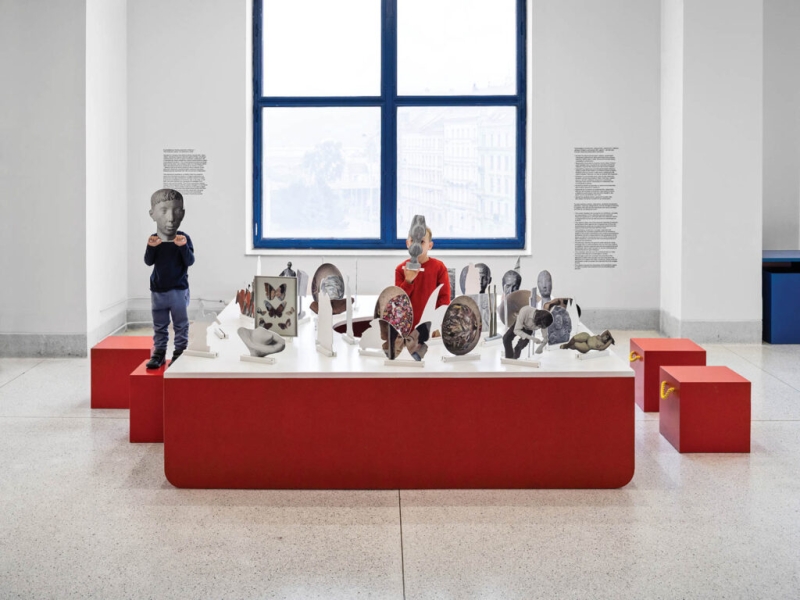
Invisible Collection, an interactive installation by Eva Kot’átková, allows visitors to curate personal art constellations with miniature replicas of works from the NGP’s holdings.
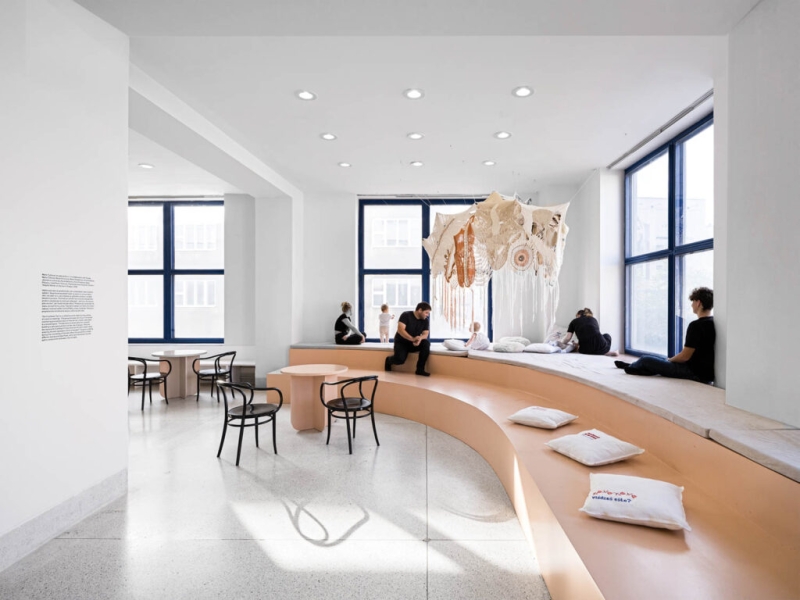
Echoing the curved counter at the other end of the café, built-in bleachers offer window seating and a close-up view of The Crocheted Tent, a collaborative work by artist Marie Tucˇková and Elpida, an organization for senior citizens.
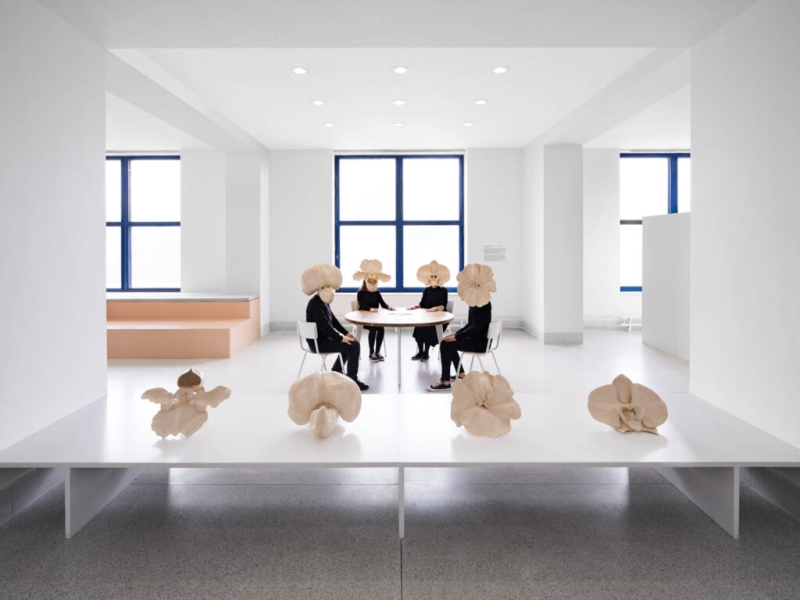
Gallery goers are encouraged to don glued-paper flower masks from sculptor Anna Hulacˇová’s Let’s Talk About Pollination, a multipart piece intended to stimulate real and imaginary conversation.
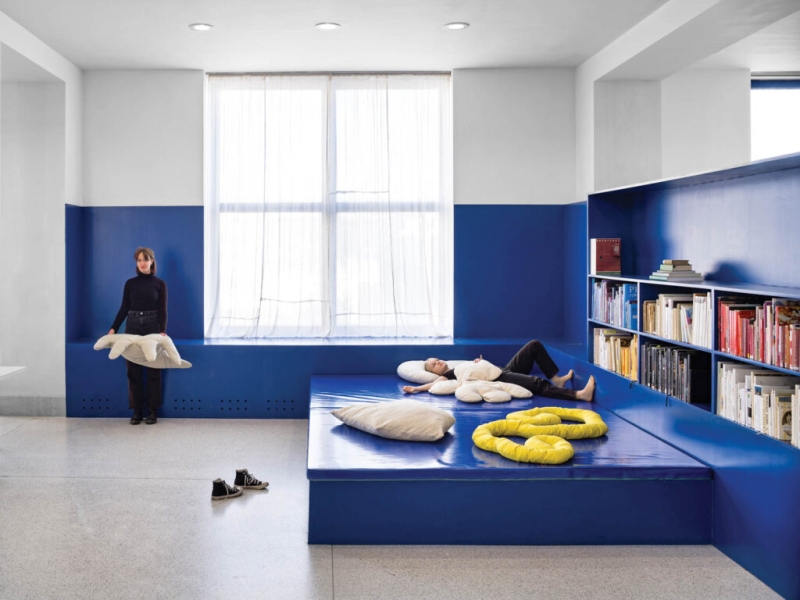
Stocked with public library books, the reading space offers a cushioned platform on which to relax amidst artist Kristina Fingerland’s pillowlike textile forms. PROJECT TEAM
NO ARCHITECTS: KRISTÝNA PLISCHKOVÁ. NATIONAL GALLERY PRAGUE CURATORIAL TEAM: BARBORA KLEINHAMPLOVÁ; EVA SKOPALOVÁ; OLDRˇICH BYSTRˇICKÝ. ANEŽKA MINARˇÍKOVÁ; MAREK NEDELKA: GRAPHIC DESIGN. MICHAL ŠTOCHL: PRODUCTION COORDINATOR. JIRˇÍ LEUBNER; TOMÁŠ VEBER: CONSTRUCTION TEAM.
